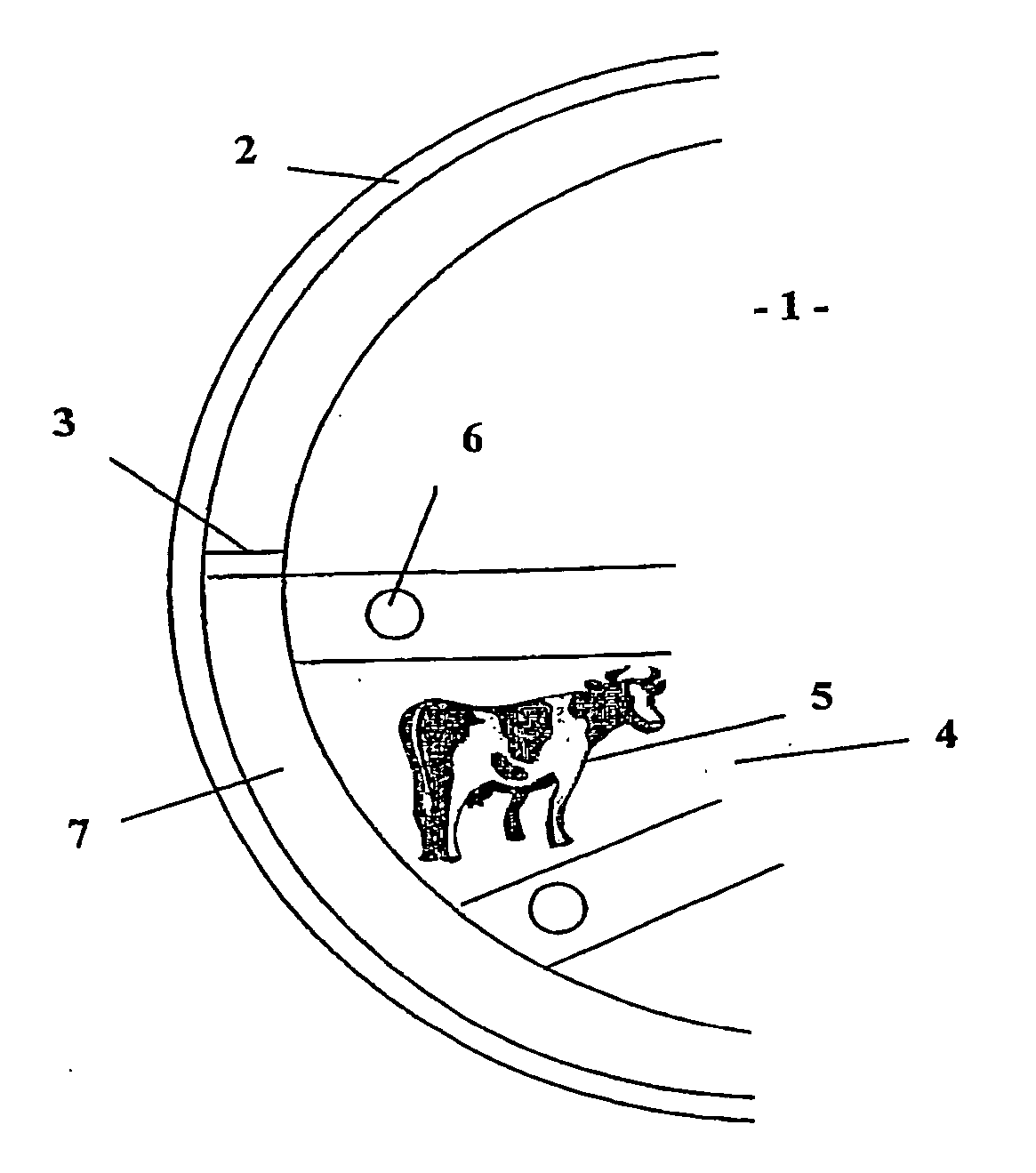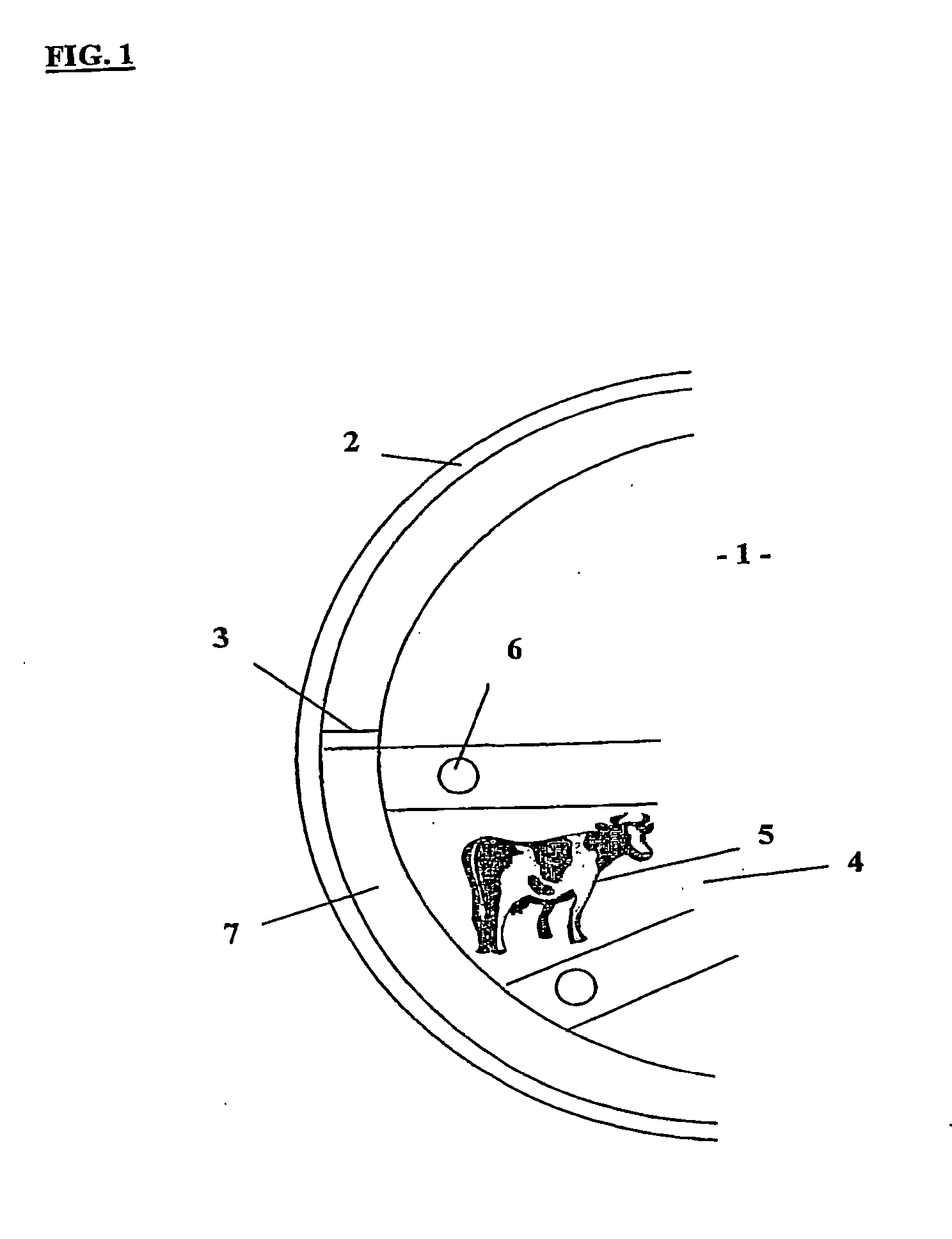Attachment for a rotary milking platform
a technology of rotary milking platform and attachment plate, which is applied in the field of attachment plate for rotary milking platform, can solve the problems of inconvenient operation, inconvenient operation, and inability to make sense ergonomically, and achieve the effect of reducing previous problems of uneven milking, saving dairy farmers a large amount of money, and adding to the comfort of the milking process for cows
- Summary
- Abstract
- Description
- Claims
- Application Information
AI Technical Summary
Benefits of technology
Problems solved by technology
Method used
Image
Examples
Embodiment Construction
[0039] FIG. 1 illustrates a rotary platform generally indicated by arrow 1 which incorporates a cluster ring 2.
[0040] The cluster ring 2 is connected to the platform 1 via spacers 3. Spacers 3 are positioned at the side of each of the bails 4 where the animals 5 are milked.
[0041] Alongside each bail 4 is a bail dummy 6.
[0042] The positioning of the spacers 3 can depend upon the direction of rotation of the platform. If the platform rotates clockwise as in the present invention, then the spacers 3 will be positioned to the left of the bail dummy as shown. Alternatively, if the platform rotates anti-clockwise, then the spacer for a particular bail placed to the right of the bail dummy. The placement of spacers determines the furthest that the hoses of the milking cluster can move in one direction.
[0043] It can be seen that the present invention can enable the hosing from the milking cluster to effectively float in the aperture 7 created between the ring 2 and the platform 1. This ensu...
PUM
 Login to View More
Login to View More Abstract
Description
Claims
Application Information
 Login to View More
Login to View More - R&D
- Intellectual Property
- Life Sciences
- Materials
- Tech Scout
- Unparalleled Data Quality
- Higher Quality Content
- 60% Fewer Hallucinations
Browse by: Latest US Patents, China's latest patents, Technical Efficacy Thesaurus, Application Domain, Technology Topic, Popular Technical Reports.
© 2025 PatSnap. All rights reserved.Legal|Privacy policy|Modern Slavery Act Transparency Statement|Sitemap|About US| Contact US: help@patsnap.com


